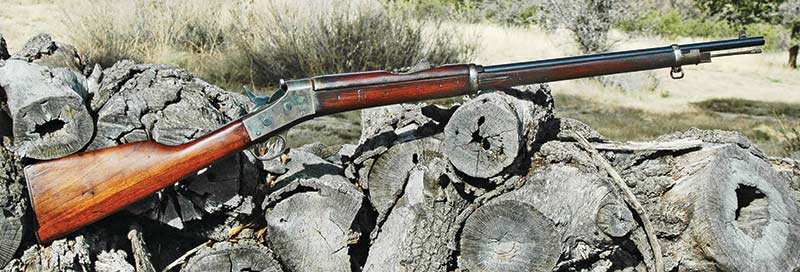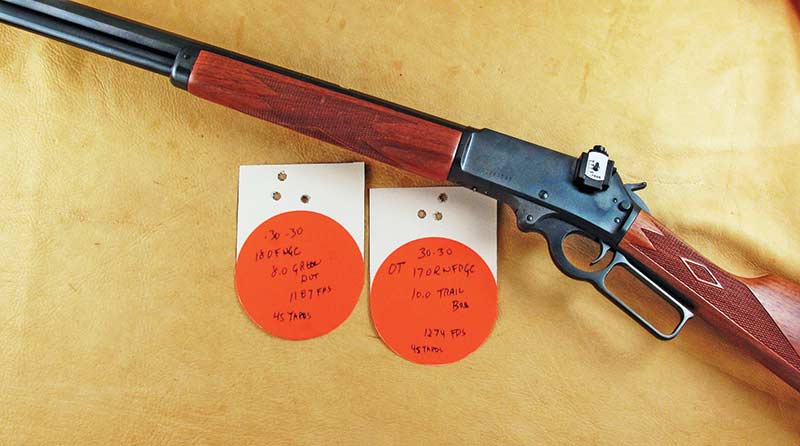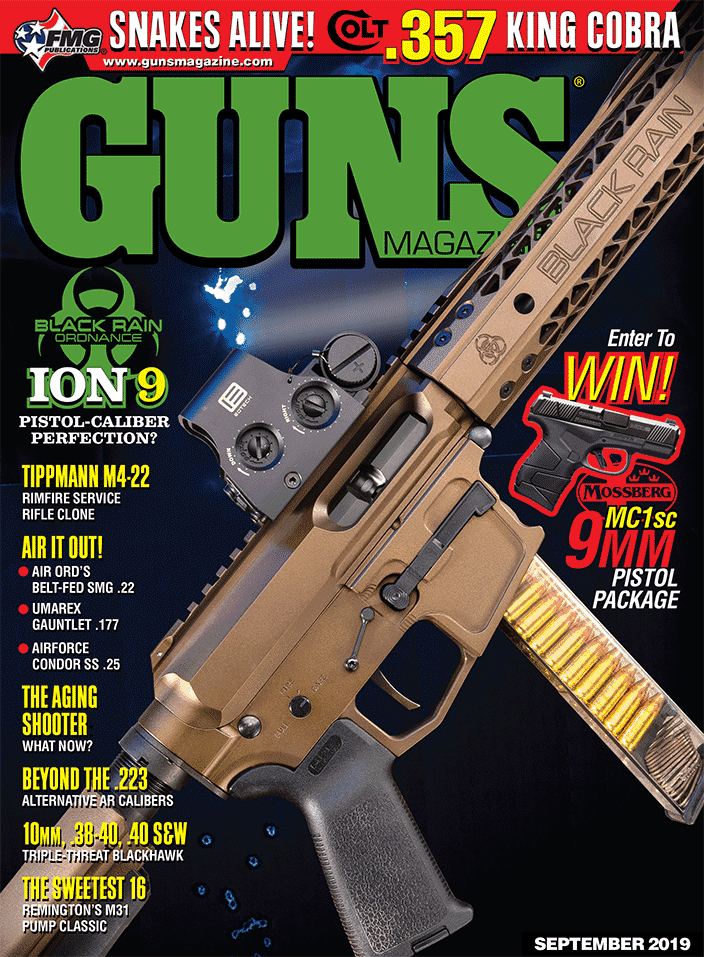Crossfire September 2019
Chicken Shot
I enjoyed John Taffin’s April “Handloading” column on the .30-30. I’ve always been a .30-30 fan. Since I don’t hunt anymore, my .30-30s are mostly used for Cowboy Action shooting. And, of course, they’re all Marlins! Several years back, John wrote an article about the Marlin 39A. A few weeks after reading it I found one at a gun show for $275. The first chicken silhouette shoot I entered, I was the only one to get all 10! Thanks, John!
Richard Gibson
Amarillo, TX
You guys have the largest pool of experts that I trust in one location so I’m hoping you can help. I just don’t understand what happened. I went to the range to test a new trigger on my AR — set up with a YHM 5.56 Phantom QD suppressor. I fired mostly double taps, a few single shots and a couple of 6-8 round strings. I let everything cool between magazines and I didn’t do any mag dumps or anything like that. I fired 100 rounds of Lake City 62-gr. ammo in total. I removed the silencer as soon as it was cool enough, put everything away and went home. When I got home I started to clean everything, ran a wet patch down the bore. Filthy as usual with carbon, ran another patch and let it sit awhile. While it was sitting I started scrubbing up the muzzle device and was shocked to find it “plated” with copper. I’ve never had this happen before. The more I scrubbed the shinier it got. First if you could educate me as to what happened and why, and even more importantly do I need to be concerned about the inside of my can? Any information you could dig up for me would be greatly appreciated. Oh, by the way, GUNS and American Handgunner are hands-down the two best gun magazines on the market. Thank you and keep it up.
Kerry Domenichelli
Via Email
That’s vaporized copper. And, yes, normal enough in a suppressed gun. Heat and pressure in firing always vaporizes some amount of copper off a bullet (mostly its base). Technically, it’s atomized copper resulting from vaporization. It’s adhering on your muzzle device because it has nowhere else to go; it’s captive within the can. Temperature fluctuation also influences this (the gas cools quickly when pressure drops). As you know, suppressed guns run dirty! There’s a lot of heat and additional pressure within the whole system, and for a longer time. Running “genuine” NATO means even more pressure. It should clean up using a dedicated copper-solvent-type bore cleaner, but make sure to get this all dried out and gone before putting the gun away.
—Glen Zediker
Play Those Oldies!
Wonderful finds by John Taffin in his June “Campfire Tales,” and greatly appreciated. As we find ourselves in constant pursuit of the latest and greatest, it is nice to see our ancestors sought the same advantages. Their words were so prescient. One tidbit I found especially interesting. The “notorious bandit” discussed in the final letter, seems to me to have been the legendary Tom Horn, who was apprehended after escaping the Cheyenne Jail in 1903 after the semi-automatic pistol he stole had jammed. He was hanged shortly thereafter. Thank you for this most interesting piece.
Camillus Robinson
Munster, IN
Cast Lightweights
I greatly enjoyed Duke’s article about lightly loaded pistol-weight cast bullets in centerfire rifles in lieu of .22 rimfires. Ammo and component droughts during the Obama administration gave me some new perspectives, too. Still, I noted I have some .312 Meister 94-gr. RNFPs left over from another project and a 7.62×39 CZ 527 bolt-action carbine. I’ve assembled a dummy cartridge that feeds unexpectedly well, but I’ve no clue for a powder charge that might yield a velocity of 1,100-1,300 fps or so. Might Duke or someone else in your pool of knowledgeable people have some advice … other than buy a .22?
You always give a chance to learn something.
Brad Adams
Via email
Toxic Masculinity?
I just finished reading my June issue and I wanted to thank Dr. Dabbs for his article “Testosterone: The World’s Most Potent Poison.” Having spent 33 years in the Field Artillery at various levels of command, I had the opportunity to participate in a number of what we referred to as “firepower demonstrations” here and in Europe. These were designed to show the lethality of the combined arms team. The article really brought back a lot of great memories. Thanks again.
Phil S.
Via email
Old Steel
Just a few comments on JT’s article on .32-20 rifles. After a few hundred rounds of Hornady 100-gr. JHPs, I switched to cast only. Two friends had octagon rifles and both shot them out. One sold his and the other had his relined. Old guns, old steel. I’m wondering if JTs Winchester 1892 is a rare short rifle as it has a 20″ barrel but no saddle ring.
About 20 years ago, I got a .25-20 round rifle and then an SRC. To think I ran almost 500 87-gr. JSP’s through them before I wised up. Besides, that JSP doesn’t open up at all at .25-20 velocities. Again, old guns and old steel.
If I had the money, I would get a Marlin .32-20. Shouldn’t be all that hard to use the dovetailed magazine hanger and add a full-length magazine. Add a carbine butt plate and wouldn’t that be nice?
Bill
Via email









